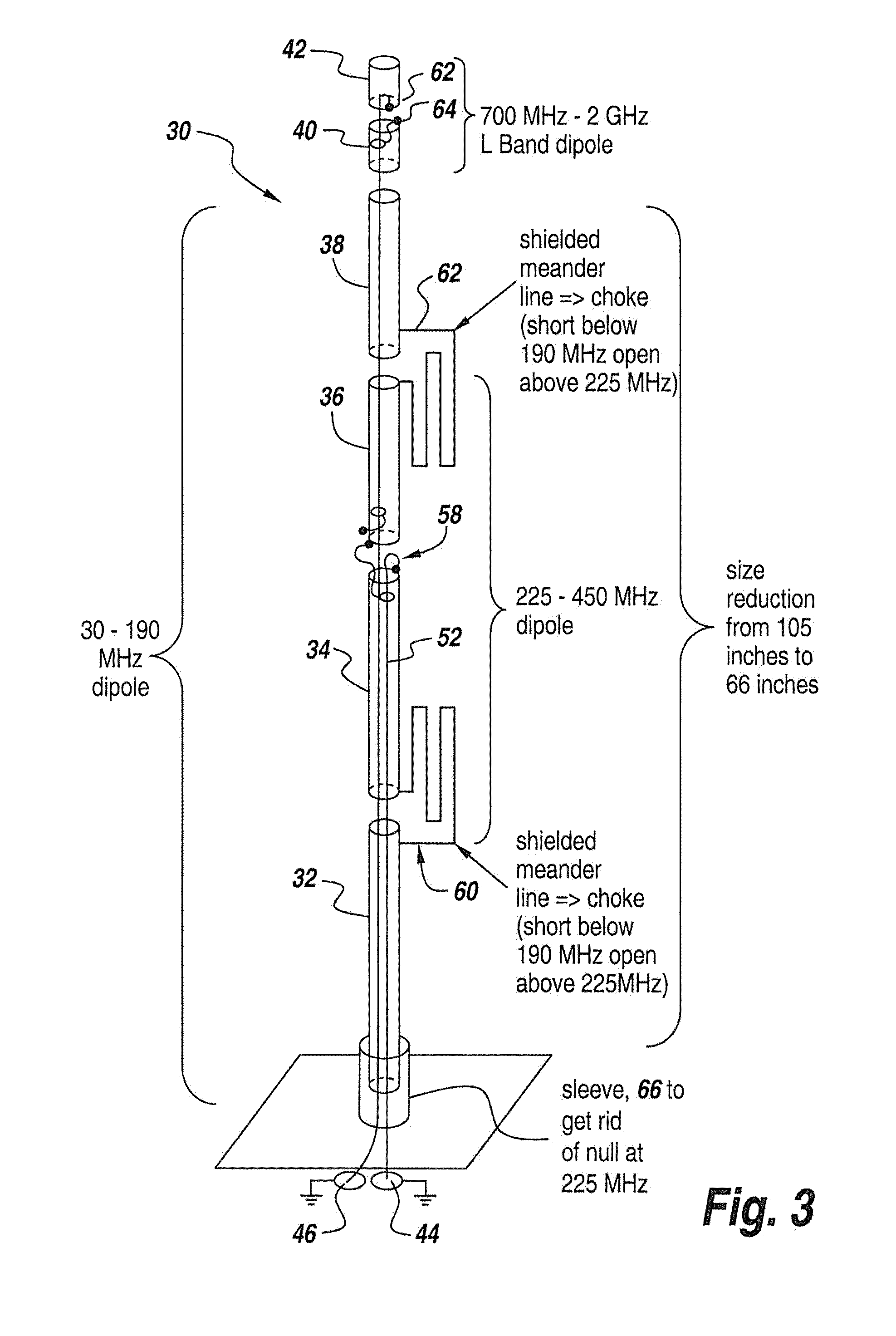Broadband whip antenna
a whip antenna and antenna technology, applied in the direction of antennas, antenna details, antenna feed intermediates, etc., can solve the problems of affecting the performance of the antenna, the difficulty of fabricating and deploying, and the difficulty of achieving the effect of reducing the size, improving the gain of the uhf dipole, and improving the vswr
- Summary
- Abstract
- Description
- Claims
- Application Information
AI Technical Summary
Benefits of technology
Problems solved by technology
Method used
Image
Examples
Embodiment Construction
[0057]Referring now to FIG. 1, in the prior art, a vehicle 10 is normally provided with a number of antennas 12-20 tuned to various bands. The fact of having to provide a vehicle with such a large number of antennas for multi-band coverage is problematical and it had been proposed to have an elongated whip, here shown as monopole 12, loaded up to accommodate various bands.
[0058]However, the length of the whip as well as the inefficiencies of providing such a wideband bottom-loaded whip had led to the development of the multi-band antenna described above. This multi-band antenna also had deficiencies which resulted in the development of the subject shortened whip antenna shown in FIG. 2.
[0059]Here an antenna 30 is mounted to a vehicle 10 in which the overall length of the antenna is ⅔rds of the length of the prior multi-band antenna described in the above patent applications. The coverage of the subject antenna is from 30 megahertz to 2 gigahertz. Note that this antenna is in the for...
PUM
 Login to View More
Login to View More Abstract
Description
Claims
Application Information
 Login to View More
Login to View More - R&D
- Intellectual Property
- Life Sciences
- Materials
- Tech Scout
- Unparalleled Data Quality
- Higher Quality Content
- 60% Fewer Hallucinations
Browse by: Latest US Patents, China's latest patents, Technical Efficacy Thesaurus, Application Domain, Technology Topic, Popular Technical Reports.
© 2025 PatSnap. All rights reserved.Legal|Privacy policy|Modern Slavery Act Transparency Statement|Sitemap|About US| Contact US: help@patsnap.com



